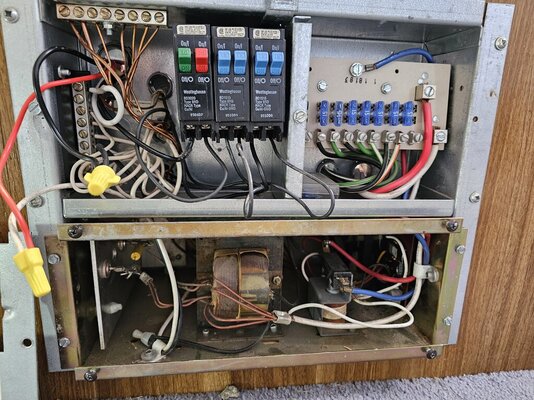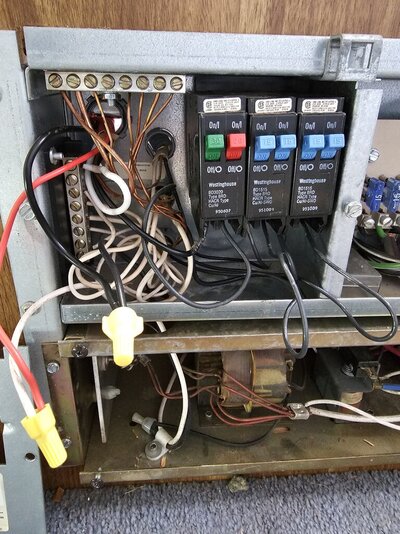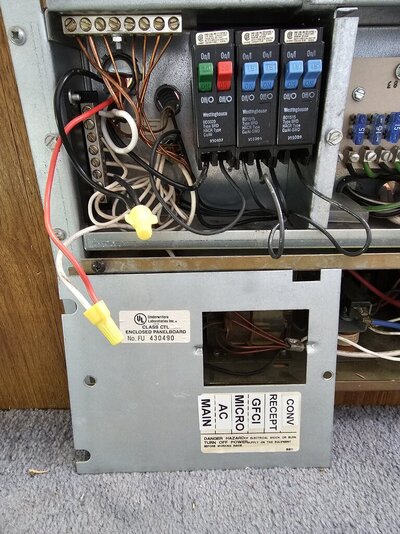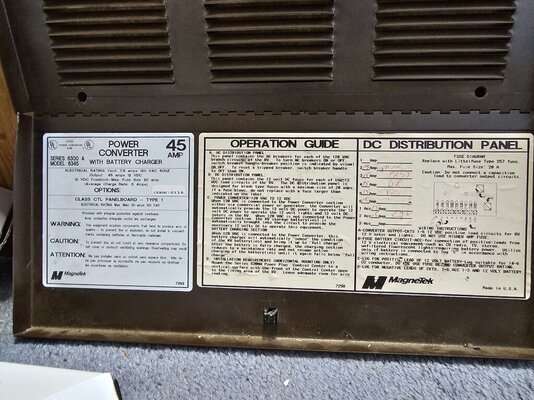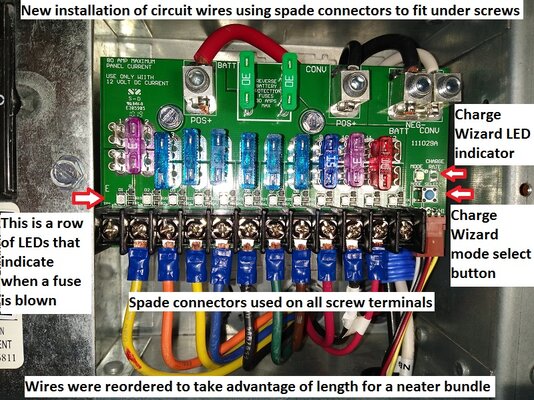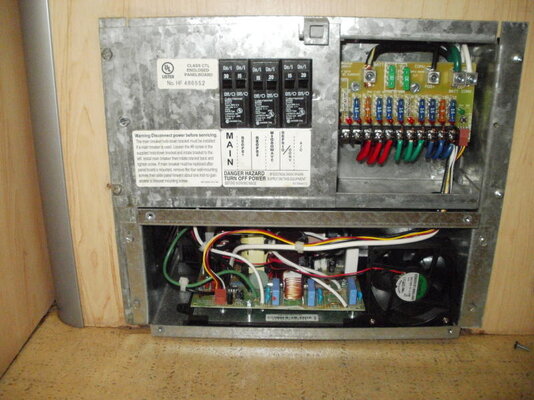Hi. I've got a 2009 Rockwood, and a friend is helping me install an inverter with an automatic transfer switch. In looking over the setup before install, we noticed a weird things with the breakers.
One is labeled GFCI and another is labeled GFCI / CONVERTER. They are both 15 amp. Turns out that the outlets on the front half of the camper (GFCI and regular ones) are on the breaker labeled GFCI, and the outlets in the back half of the camper (GFCI and regular ones), and the converter are on the breaker labeled GFCI / CONVERTER. This seemed stupid, so we put both wires that powered the outlets (front half and back half) on the breaker labeled GFCI, and left the converter on the breaker labeled GFCI / CONVERTER. We plugged back into shore power, tested everything, and all seemed to be fine. Converter activated, fan eventually came on when we applied enough load, outlets all worked, etc.
Has anyone ever heard of this? Have we potentially screwed something up? Would there be any logic of having the converter on a circuit with half of the outlets?
One is labeled GFCI and another is labeled GFCI / CONVERTER. They are both 15 amp. Turns out that the outlets on the front half of the camper (GFCI and regular ones) are on the breaker labeled GFCI, and the outlets in the back half of the camper (GFCI and regular ones), and the converter are on the breaker labeled GFCI / CONVERTER. This seemed stupid, so we put both wires that powered the outlets (front half and back half) on the breaker labeled GFCI, and left the converter on the breaker labeled GFCI / CONVERTER. We plugged back into shore power, tested everything, and all seemed to be fine. Converter activated, fan eventually came on when we applied enough load, outlets all worked, etc.
Has anyone ever heard of this? Have we potentially screwed something up? Would there be any logic of having the converter on a circuit with half of the outlets?

